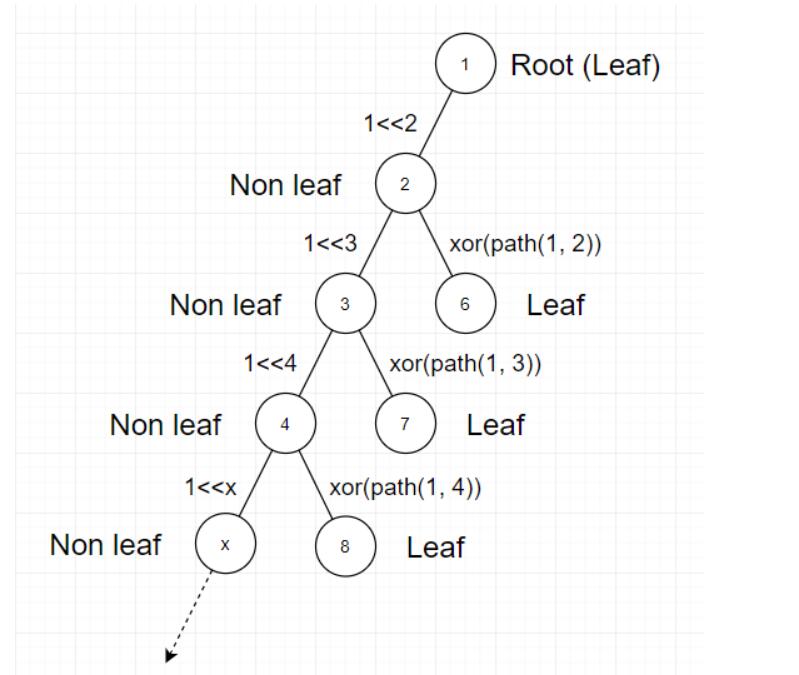Codeforces Round #633 (Div. 2)
Solutions
A. Filling Diamonds
通过猜测就欧克了。
发现如果竖直放置就只有一种摆放方法了。
#include<bits/stdc++.h>
using namespace std;
#define pb push_back
#define mp make_pair
#define all(x) (x).begin(), (x).end()
#define fi first
#define se second
#define sz(x) ((int)(x).size())
typedef vector<int> VI;
typedef pair<int,int> PII;
const int N=100010;
const int inf=0X3f3f3f3f;
const long long INF=0x3f3f3f3f3f3f3f3f;
const double eps=1e-6;
const double pi=acos(-1.0);
const int mod=1000000007;
typedef long long ll;
ll powmod(ll a,ll b) {ll res=1;a%=mod; assert(b>=0); for(;b;b>>=1){if(b&1)res=res*a%mod;a=a*a%mod;}return res;}
ll gcd(ll a,ll b) { return b?gcd(b,a%b):a;}
// head
int _;
int main() {
for (scanf("%d",&_);_;_--) {
int n;
scanf("%d",&n);
printf("%d\n",n);
}
}
B. Sorted Adjacent Differences
排序后,比较显然的就相距最远的放右边,然后就这样放就可以了。
#include<bits/stdc++.h>
using namespace std;
#define pb push_back
#define mp make_pair
#define all(x) (x).begin(), (x).end()
#define fi first
#define se second
#define sz(x) ((int)(x).size())
typedef vector<int> VI;
typedef pair<int,int> PII;
const int N=100010;
const int inf=0X3f3f3f3f;
const long long INF=0x3f3f3f3f3f3f3f3f;
const double eps=1e-6;
const double pi=acos(-1.0);
const int mod=1000000007;
typedef long long ll;
ll powmod(ll a,ll b) {ll res=1;a%=mod; assert(b>=0); for(;b;b>>=1){if(b&1)res=res*a%mod;a=a*a%mod;}return res;}
ll gcd(ll a,ll b) { return b?gcd(b,a%b):a;}
// head
int _;
int main() {
for (scanf("%d",&_);_;_--) {
int n;
scanf("%d",&n);
VI t(n);
for (int i=0;i<n;i++) scanf("%d",&t[i]);
sort(all(t));
int l,r;
if (sz(t)&1) {
printf("%d ",t[sz(t)/2]);
l=sz(t)/2-1; r=sz(t)/2+1;
} else {
l=sz(t)/2-1; r=sz(t)/2;
}
while (l>=0) {
printf("%d %d ",t[r++],t[l--]);
}
puts("");
}
}
C. Powered Addition
这个题稍加分析,可以发现,你只要确定逆序的最大差值即可,然后计算秒数,这样的话,任意位置总是可以满足要求的。
#include<bits/stdc++.h>
using namespace std;
#define pb push_back
#define mp make_pair
#define all(x) (x).begin(), (x).end()
#define fi first
#define se second
#define sz(x) ((int)(x).size())
typedef vector<int> VI;
typedef pair<int,int> PII;
const int N=100010;
const int inf=0X3f3f3f3f;
const long long INF=0x3f3f3f3f3f3f3f3f;
const double eps=1e-6;
const double pi=acos(-1.0);
const int mod=1000000007;
typedef long long ll;
ll powmod(ll a,ll b) {ll res=1;a%=mod; assert(b>=0); for(;b;b>>=1){if(b&1)res=res*a%mod;a=a*a%mod;}return res;}
ll gcd(ll a,ll b) { return b?gcd(b,a%b):a;}
// head
int _;
int main() {
for (scanf("%d",&_);_;_--) {
int n;
scanf("%d",&n);
VI a(n),d(n);
for (int i=0;i<n;i++) scanf("%d",&a[i]);
d[0]=0;
int maxx=a[0];
for (int i=1;i<n;i++) {
if (a[i]<maxx) {
d[i]=maxx-a[i];
} else {
maxx=a[i];
d[i]=0;
}
}
int sum=*max_element(all(d));
//printf("%d**\n",sum);
if (sum==0) puts("0");
else {
int cnt=0;
ll tmp=1;
do {
sum-=tmp;
cnt++;
tmp<<=1;
} while (sum>0);
printf("%d\n",cnt);
}
}
}
D. Edge Weight Assignment
这道题分析了挺久的,如果路径都是偶数,那么最小肯定是1,如果存在奇数的话,最小肯定是3。接下来就是最大的情况了,我一开始以为和直径有关,后来发现越来越离谱。只需要统计非叶子节点连接多少个叶子节点即可,这些边的边权都要一致才可以,然后就解决了。这样就是纯属猜测了。
正解就是通过一种方法可以最大化结果,然后就可以知道上述猜测的正确性了。也就是在图中非叶子节点上又多了叶子,那么就要和原来的那个叶子的边权一致。见官方图

#include<bits/stdc++.h>
using namespace std;
#define pb push_back
#define mp make_pair
#define all(x) (x).begin(), (x).end()
#define fi first
#define se second
#define sz(x) ((int)(x).size())
typedef vector<int> VI;
typedef pair<int,int> PII;
const int N=100010;
const int inf=0X3f3f3f3f;
const long long INF=0x3f3f3f3f3f3f3f3f;
const double eps=1e-6;
const double pi=acos(-1.0);
const int mod=1000000007;
typedef long long ll;
ll powmod(ll a,ll b) {ll res=1;a%=mod; assert(b>=0); for(;b;b>>=1){if(b&1)res=res*a%mod;a=a*a%mod;}return res;}
ll gcd(ll a,ll b) { return b?gcd(b,a%b):a;}
// head
int n;
vector<int> G[N];
bool isleaf[N];
int dep[N];
bool flag;
void dfs(int u,int p) {
dep[u]=dep[p]+1;
for (auto it:G[u]) {
if (it!=p) {
dfs(it,u);
}
}
}
int main() {
scanf("%d",&n);
for (int i=0;i<n-1;i++) {
int u,v;
scanf("%d%d",&u,&v);
G[u].pb(v);
G[v].pb(u);
}
int root;
for (int i=1;i<=n;i++) {
if (sz(G[i])==1) {
//printf("%d**\n",i);
root=i;
isleaf[i]=true;
}
}
dep[0]=-1;
dfs(root,0);
int tot=0;
for (int i=1;i<=n;i++) {
//printf("%d#####\n",dep[i]);
if (isleaf[i]) {
if (dep[i]&1) flag=true;
} else {
int num=0;
for (auto it:G[i]) {
if (sz(G[it])==1) num++;
}
if (num) num-=1;
tot+=num;
}
}
if (!flag) printf("1 ");
else printf("3 ");
printf("%d",n-1-tot);
}
埋骨何须桑梓地,人生无处不青山




 浙公网安备 33010602011771号
浙公网安备 33010602011771号